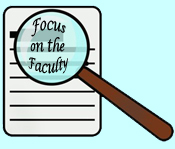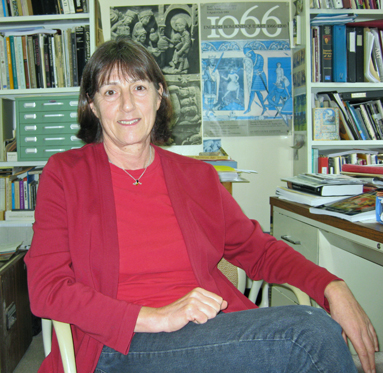Department of Art History


For Dr. Tessa Garton, professor of art history at the College of Charleston, 11th and 12th century Romanesque sculpture isn't just an interest but a journey. Her most recent focus has been the study of medieval art along the pilgrimage roads to Santiago de Compostela.
For more than 10 years, Garton worked on the Corpus of Romanesque Sculpture in Britain and Ireland as a field investigator. Her work involved repeated trips to Ireland, visiting sites, cataloguing photographs, documenting her findings, and researching the history of the sites. Garton describes the process as slow and deliberate, and in the end very rewarding.
Her efforts, along with those of many others, helped develop the first digital archive of British and Irish Romanesque stone sculpture for the Corpus of Romanesque Sculpture in Britain and Ireland, which can be found at www.crsbi.ac.uk. The web site is the first online research database for Romanesque sculpture in Britain and Ireland.
A long-standing interest in Medieval Pilgrimage led Garton to a study of Medieval Pilgrimage in Ireland, resulting in the publication of an article titled, "The Influence of Pilgrimage on Artistic Traditions in Medieval Ireland." Garton then turned her attention to the larger study of the pilgrimage to Santiago de Compostela, the shrine of St. James in northern Spain.
The pilgrimage became very popular during the 11th and 12th centuries, and has four main routes through France, beginning in Arles, Le Puy, Vezelay, or Paris. The routes then come together across the Pyrenees, and continue through northern Spain to Santiago.
In the last few years, Garton has made repeated trips to France and northern Spain, two of which were made possible by funding from the College of Charleston Summer Research and Development Award, and another with funding from the Program for Cultural Cooperation between Spain's Ministry of Culture and United States Universities.
Having narrowed her area of study to the region of northern Palencia, she made an initial visit for about a month in summer 2007, and returned for a full semester during sabbatical leave in 2008, to continue more extensive research on the Romanesque sculpture of the region. Garton says, "Essentially I now have a very thorough database, but there is always more data to be collected."
Garton is particularly interested in the effect of the pilgrimage on outlying towns and areas along the pilgrimage route. Almost 200 virtually untouched Romanesque churches remain in northern Palencia and Garton is interested in studying these churches in relation to the pilgrimage. She marveled at the excellent state of preservation of the churches and the fantastic restoration work currently taking place, and said with great admiration, "I very much respect the work of the local scholars."
Garton notes that when her research began, she was unaware of the existing amount of local scholarship. "It's as if the very detailed documentation you thought you needed had in essence been done," she explains.
Although Garton initially planned to use her research to produce an online database, she now wishes to expand in an analytical direction. Garton says, "The existing work has given me more access to material, and changed my ideas about my own project."
Garton says that her documentary work is developed and the next step in the process is to be published. She anticipates her vast database of images to be developed into essays and articles.
At the College of Charleston, Garton teaches a variety of classes in Ancient and Medieval art history. Her colleague Professor David Kowal describes her as "An excellent and concerned teacher, a scholar of the very highest order, and a person most unselfishly committed to the betterment of students and colleagues, the Art History Department and the College of Charleston as a whole."
Garton says she especially enjoyed teaching the special topics, upper level Medieval Manuscript Illumination class in the summer, alongside her colleague Sharon Lacey. She described this class as very "hands on," or in other words, as having a strong studio art involvement.
Garton earned her bachelor's degree at the University of East Anglia located in Norwich, England and her Ph. D. in art history from the Courtauld Institute at the University of London. She has been teaching at the College of Charleston since 1988.
By studying the works of art on site, Professor Garton is able to bring to her students an enthusiasm for the original works of art-- a passion that extends beyond the walls of the classroom.
###
Erin Pyne contributed to this article.